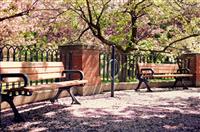
英文翻译: Pastel water chestnut pan
This pair of works can represent the most beautiful existence in the Tongzhi period. The bottom style is the seal of the Tongzhi year. Everyone knows that the Tongzhi Emperor"s aesthetic is the best, and the porcelain of his era pays attention to a kind of implicit aesthetic feeling, and belongs to the highest level of aesthetic appreciation.
In the works of the three generations of the Qing Dynasty, the perfection of all porcelain can be counted as one rule. And this pastel water vase can represent the highest level of porcelain making at that time.
The FINE GOODS OF OFFICIAL SYSTEM LEVEL, THIS PAIR OF PASTEL WATER VASE STILL MAY BE THE LITTLE BABY IN WHICH A CONCUBINE BOUDOIR COMES FROM MAKING OFFICE.
By contrast, you will find that the whole design of this unique water tank is very implicit, revealing a kind of aesthetic feeling. Especially with the more introverted flowers above, the pastels are now shining with transparent glaze color, and the bottom of the whole ware is quite lubricated and clear.
There is no doubt that the fine works belong to the official kiln, especially the focus is on pastel painting flowers, a beautiful small painting, and the enlarged details of the color material can feel the outline of a kind of faint dyeing at that time. To the details of the amplification of appreciation, the whole flower is actually used a kind of curved stem fine leaf painting, and then the whole flower is very enchanting charm.
Painting details are too beautiful, and with white delicate fetal quality, Tongzhi aesthetic can be called invincible. If Qianlong belongs to the rich and bright, and the same rule is very Xiaozi. The final characteristic of the whole water tank is lovely and harmonious, and the little baby is so beautiful.
The MODELLING OF THIS LITTLE BABY IS VERY BEAUTIFUL, COMPACT AND STABLE, PRESENT A KIND OF INSIDE COLLECT BEAUTIFUL, LITTLE BABY IS THE MODELLING THAT A BIG BELLY CAN ALLOW HOWEVER, LOVED. In today"s market, but also out of date, the ancient aesthetic is high-end, this pair of pastel water chestnut water vase, perfect appearance, very collection value.
Bronze thangka painting
The Tibetan Thangka, also known as Tangga, is a transliteration of the Tibetan language. It is a scroll painting mounted on colored satin fabric. It is a painting with Tibetan cultural characteristics. The painting core and mounting of "Thangka" are inseparable from the achievements of agricultural civilization such as cotton, hemp, silk and silk. "Thangka" painting has distinct national characteristics, strong religious color and unique artistic style. It is of certain social and academic value to the study of Chinese Tibetan folk and religious art, as well as of value for the world to appreciate and collect.
Copper carving skill, the traditional handicraft skill of Hangzhou, Zhejiang Province, is one of the national intangible cultural heritage.
Hangzhou copper carving is the continuation of ancient bronze ware manufacturing, which was greatly developed in the Wuyue and Southern Song Dynasties. After Tongzhi of the Qing Dynasty, Hangzhou copper carving skills represented by "Zhu Fu Copper Art" became increasingly mature and passed down from generation to generation.
In June 2008, copper carving was included in the second batch of national intangible cultural heritage List of traditional skills, project No. ⅷ -119. In November 2019, the List of National Intangible Cultural Heritage Representative Project Protection Units was published, and Jinxing Copper Group Co., Ltd. was granted the qualification of copper carving art project protection units.
Copper carving includes painting and writing on copper plates. Derived from wall hangings of stone carvings and wood carvings, it has largely absorbed the artistic essence of traditional stone carvings and wood carvings, and combined with the carving technology of bronze ornaments, and the form of expression has been constantly developing. The copper calligraphy fresco with local characteristics puts the famous people"s poems and paintings on copper plates, and then after chemical and physical treatment, the color is simple, so that the painting is the main body, the poetry is the foil, and has a strong appeal.
The colored and white
Copper plate painting, to places of historic interest and natural landscape, flowers and birds, characters, myth and so on in the spraying and become, then through membrane oxidation coloring, polishing, grinding, cleaning, became color bronze sculptures, inheritance people absorbed the essence of the folk painting and the folk paper-cut, the artistic features of New Year pictures, apply to the tripod technology, has the rich expressive force.
Three colors for this
Copper sculpture does not need spraying color, copper plate can get gold, silver, copper three natural metal colors. This process mainly benefits from the invention patent of purple gold copper engraving. Painting on copper plates with historical themes as background. Layout to achieve the most parallel, and then hand-carved three-dimensional relief, after sand-throwing, grinding, etching treatment, three metal colors appear on the picture, to achieve a sparkling artistic effect. The three colors of gold, silver and bronze become the main body of the picture. It is characterized by no rust, no fading, no corrosion, no falling off, no deformation, long preservation time, very collection value.
Decorate the permanent
The copper decoration used in the building is not easy to corrode. According to the malleable characteristics of copper and the structural needs of copper buildings, the outer wheel of the whole picture is deformed and colored, forming a multi-layer, multi-shape, porous, multi-edge, multi-surface and multi-line modeling structure. The decoration is permanent, the color is unchanged, the shape is novel, strong and safe, this copper Thangka is easy to collect, the quality is perfect, and it has a great value of folk culture and collection.




